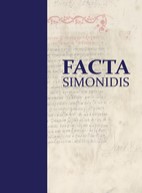Muzeum Stefana Kardynała Wyszyńskiego w Prudniku-Lesie. Historia i teraźniejszość
Cardinal Stefan Wyszyński Museum in Prudnik: The Past and The Present
Author(s): Artur HamryszczakSubject(s): Christian Theology and Religion, Museology & Heritage Studies, History of Church(es), Post-War period (1950 - 1989), Transformation Period (1990 - 2010), History of Communism
Published by: OFFICINA SIMONIDIS. Wydawnictwo Uczelni Państwowej im. Szymona Szymonowica w Zamościu
Keywords: Prudnik; Franciscans; Stefan Wyszynski; church museum; internment of the primate;
Summary/Abstract: Cardinal Stefan Wyszynski was imprisoned by communist authorities from September 25, 1953 to October 28, 1956. One of his places of confinement was the Franciscan monastery in Prudnik-Las, where he stayed from October 6, 1954 to October 29, 1955. Prior to Wyszyński’s arrival, the army evicted the Franciscans living there. It was only in 1957, two years after the cardinal was transferred to Komańcza, that the monks regained the monastery thanks to the efforts of the residents of Prudnik. In the rebuilt monastery, the cell in which Wyszyński had stayed was converted into a memorial chamber devoted to him. The chamber was opened by Cardinal Józef Glemp, Primate of Poland, on May 8, 1983, during the consecration ceremony of the monument to Cardinal Stefan Wyszyński in front of the monastery. As the original furnishings had not been preserved, the cell was equipped with the furniture from the period of the primate’s imprisonment. The arrangement of the cell is intended, through its realism, to reflect not only the living conditions of the imprisoned cardinal but also to make visitors better acquainted with his life and pastoral activities, as well as the social and political reality of Poland in the 1950s. In 2007, taking advantage of modern media, the organizers opened an audiovisual room on the first floor of the monastery, featuring an exhibition of the primate’s memorabilia and graphics, which illustrates the history of the monastery and Cardinal Wyszyński’s life and activities. The museum is an example of an ecclesiastical biographical institution that carries out the tasks set for it by the ecclesiastical legislator. As such, it has both religious and cultural appeal for visitors. It should be noted that since 2001, when the Polish parliament dedicated the museum to Cardinal Wyszyński, the Franciscans and the Prudnik town authorities have taken joint initiatives to popularize the person of the primate.
Journal: Facta Simonidis
- Issue Year: 15/2022
- Issue No: 2
- Page Range: 67-84
- Page Count: 18
- Language: Polish

